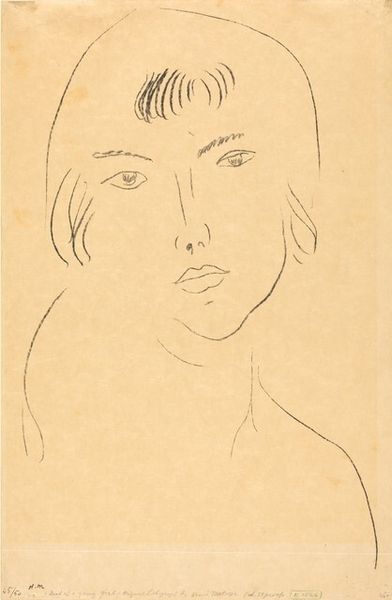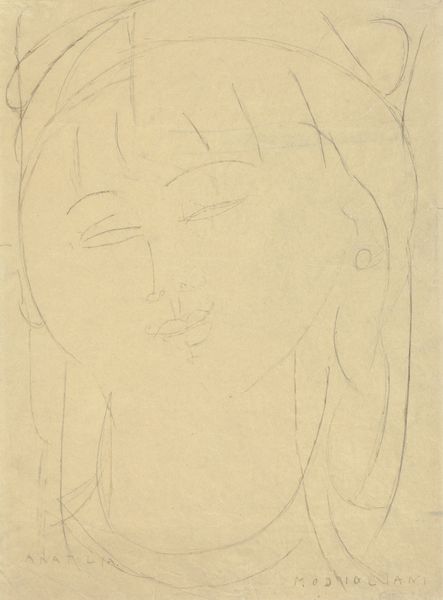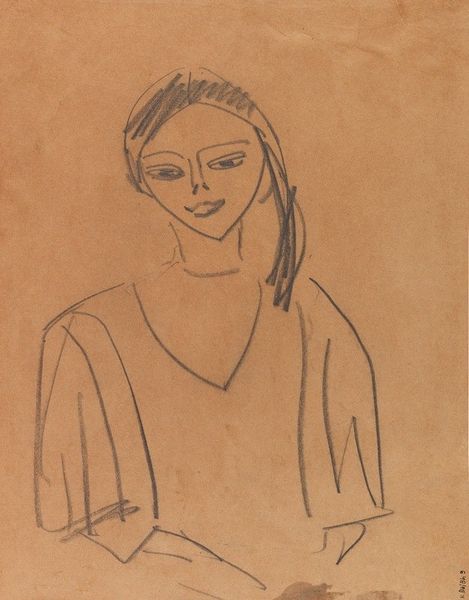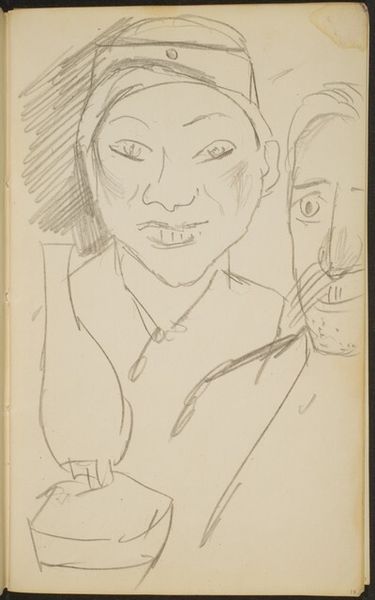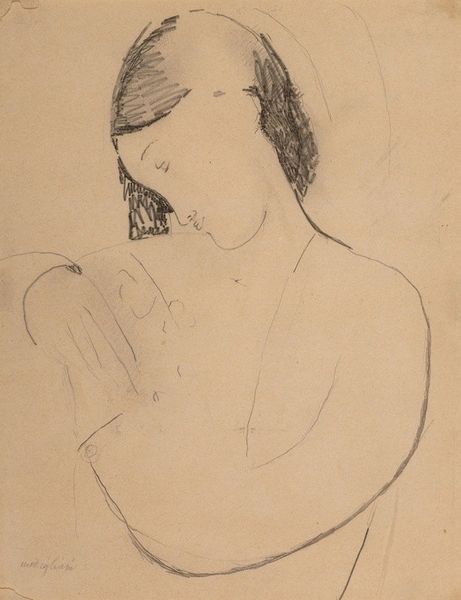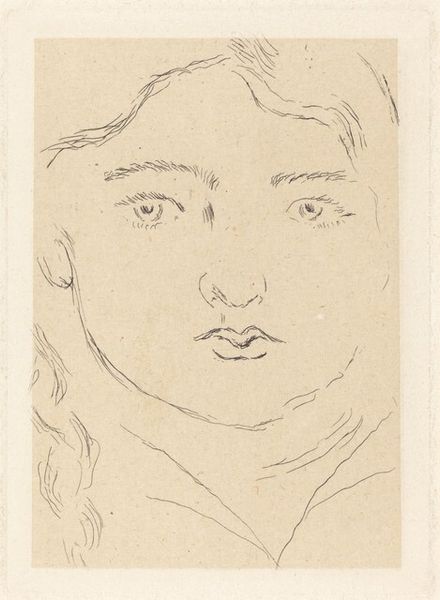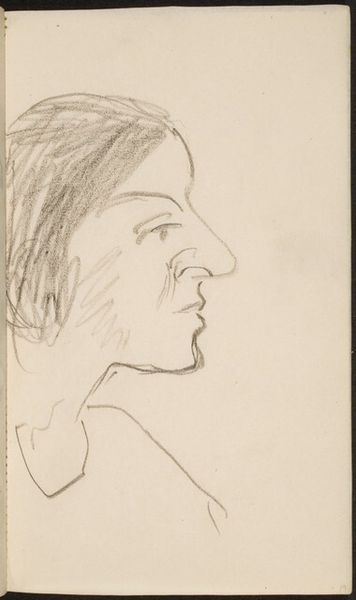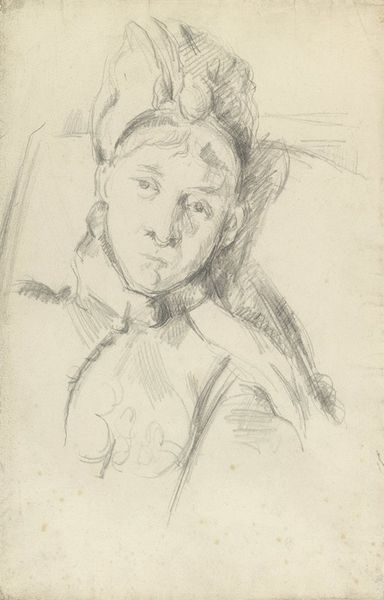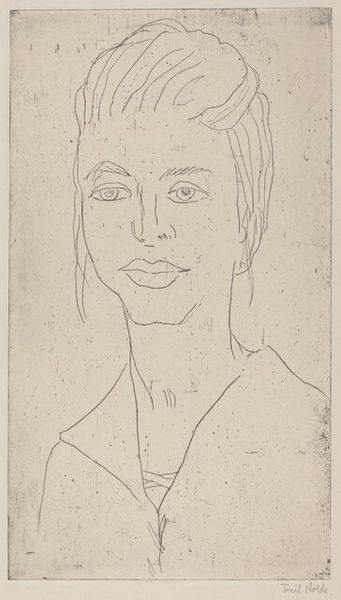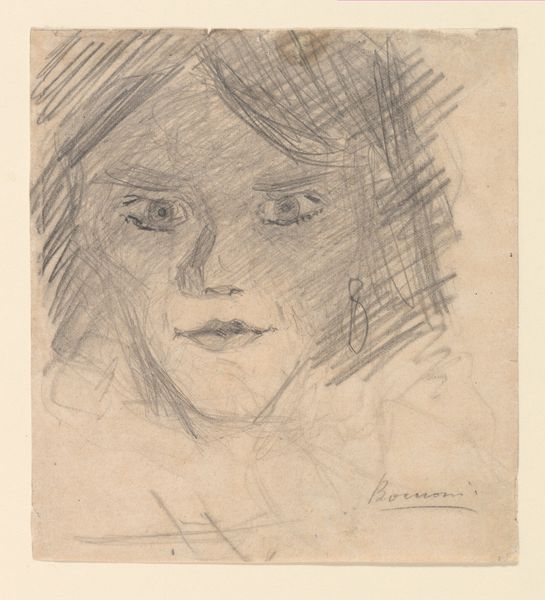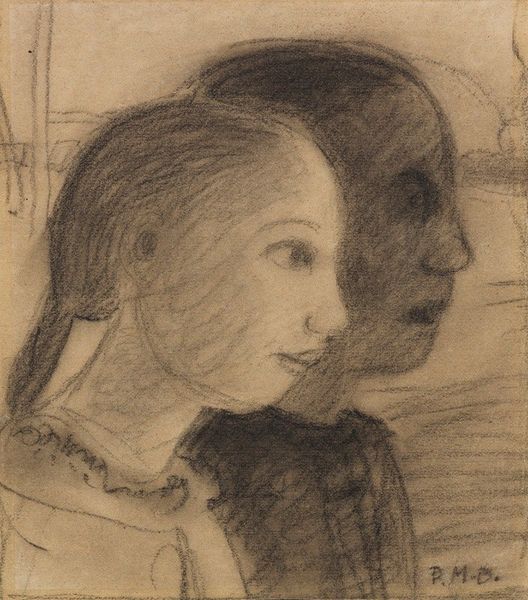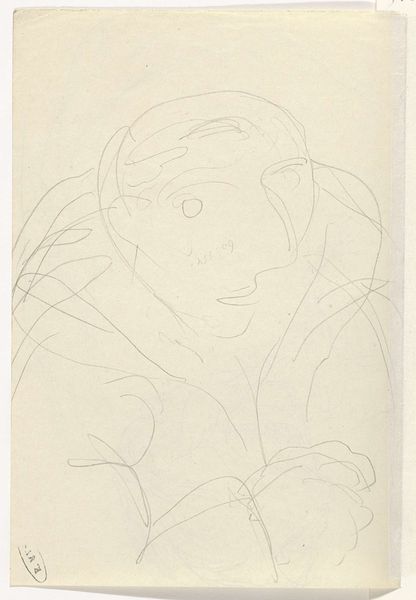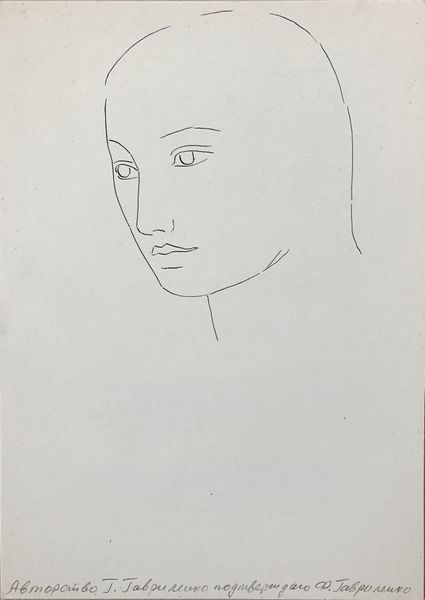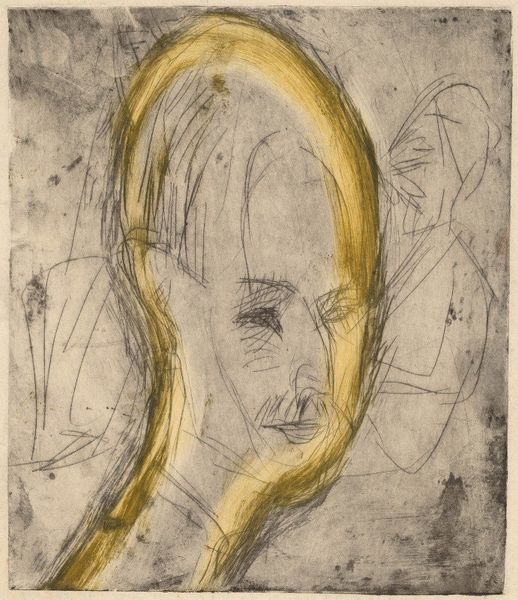
Copyright: Public Domain: Artvee
Curator: This drawing is titled "Beatrice Hastings" by Amedeo Modigliani, created in 1914 using pencil. Editor: The sketch feels so immediate, almost like a fleeting thought captured on paper. The lines are delicate, but there’s a quiet strength in the subject’s gaze, despite the relative lack of detail in other features. Curator: Modigliani's portraits, particularly those of Hastings, his lover at the time, speak to the bohemian circles in which they moved. Hastings herself was a writer and critic, deeply involved in the artistic and literary scenes of Paris. Considering the drawing's production in 1914, the precipice of global conflict looms, influencing artistic output as seen here in the material simplicity and sketch format, potentially because resources might have been diverted during that period. Editor: Absolutely, we see a definite commentary when understanding production restraints. I wonder, too, how their complex relationship influenced the portrayal. There's a noticeable absence of sentimentality here, a stark contrast to traditional portraiture meant to idealize the sitter. I notice her earrings particularly. How available and how much did it cost to fashion such a delicate thing back then? It appears her expression has more authority because it does not pander. And as her companion, did the artist and sitter wish to express through dress and medium this woman's serious cultural impact? Curator: It's interesting to consider the performative aspects of portraiture then, and the ways in which artists and sitters negotiated those power dynamics through materials and form. Modigliani likely used pencil, in part, for its accessibility. As well as its inherent qualities as a medium capable of producing fine lines, to quickly produce numerous portraits, both as studies and finished works to sustain his practice financially in this avant-garde circle. I wonder about the source and origin of the pencil too... Was this pencil made by machine or by hand and in what country? Editor: Considering those questions is essential for a total overview. By viewing this piece within a larger material context, including both his personal relationships and economic demands, it helps illuminate the political circumstances. Now looking again at Hastings’ face, and her intense direct gaze... it makes one consider whether that level of candid authority could still be afforded by a female portrait in today’s contemporary climate. Curator: Food for thought, indeed. Editor: Certainly.
Comments
No comments
Be the first to comment and join the conversation on the ultimate creative platform.
